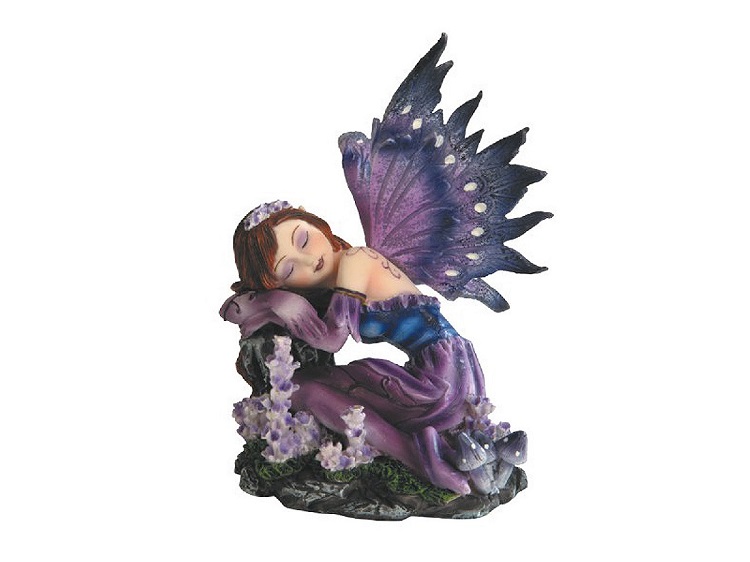The Legend of Fairies: A Brief History
Are you a fairy fanatic just like us? Our love of fairies is obvious given the extensive selection of figurines for sale in our online gift shop!
Our team doesn't just care about figurines - we care about real fairies. Their history, where they live, their present-day lives, and everything in between. We've even tried out some summoning spells throughout the years! But we don't give those secrets away that easily.
Journey with us through the fantastical history of fairies to learn about their mythological roots and their possibility of real existence.
A Brief History
The first tales of fairies date back to Greek mythology, where fairies protected the Earth with vigor and might. In the 1400s, England came up with a new idea of “little people” who were either nice or evil. This invoked fear in the British, and the average citizen avoided every place that fairies lived. Their wariness of fairies was extreme, to say the least.
Over time, this concept morphed with Christianity and fairies became “Fallen Angels”- they were too good for Hell but too bad for Heaven, so instead they were sent to Earth. The Church stood behind this idea as a positive endorsement for their beliefs, and it became the most widely accepted explanation of fairies.
Today, modern science has proven that electromagnetic matter is indeed among us, and who knows what kinds of creatures may reside there! Much more research needs to be done as science catches up to the legends.
Our fairy figurines will bring you closer to your favorite mythological beings, and may even let the fairies know that you are a safe friend.
The Greeks
Greek mythology is full to the brim of magic and supernatural critters. According to legend, Gods and Goddesses created the world. Then they immediately made meadow nymphs, forest nymphs, water nymphs, and tree nymphs to take care of the Earth.
Nymphs were small and beautiful, similar to what we now think of as fairies. Masculine nymphs, Satyrs, were able to do good or bad. Meanwhile, the feminine nymphs were pure and innocent.
There were also Sirens, who were half-bird and half-woman. They lured sailors with their songs, and the sailors would crash and drown. They were beautiful yet evil creatures.
Historians believe that fairies were recognized by the Greeks as sirens, satyrs, and nymphs. This created the foundation for the rest of the world’s myths surrounding fairies.
The British
In the 1400s, fairies became popular in England when Otia Imperialia came out, written by Gervase of Tilbury. He was a world traveler and wrote a book about his findings of the world. He included seeing magical creatures who he called fairies. They were both small and tall, ugly and beautiful, good and evil.
But the British idea of fairies morphed from what was mentioned in the book. British people were scared of fairies because they were thought to be mischievous creatures with the ability to curse them. They thought that saying the word fairy out loud would summon them, so instead, they said the words "the Neighbors, the Gentry, or Little People."
People thought that fairies resided underground, near water, or deep in the woods. Because of this, they avoided crossing paths that were famously where fairies lived. Some people went so far as to remove the corners of their houses to avoid getting in the way of the fairies. Fairy figurines were the last thing on their mind.
Eventually, all of the mythology mixed with the heavy religion of the time period and fairies became known as "Fallen Angels". The Church promoted the idea as a way to showcase God and religion.
The Irish
Fairies were creatures with magical powers that belonged to the Gods and Goddesses, “Tuatha de Dannan”. The Tuatha de Dannan were a very evolved race. They infamously disappeared after they lost a war against humans fighting for Ireland's land. After that, they appeared in the form of humans.
While the Tuatha de Dannan may have lost the war, fairies remained. Our fairy figurines will transport you back in time to a place where Gods and Goddesses held fast to the world with their trusty sidekicks- the fairies.
Encounters with Fairies
In 1917, Frances Griffiths and Elsie Wright took five pictures with fairies after their parents wouldn’t believe them that they saw fairies. They claimed to be seeing fairies at school- Cottingly Beck located in West Yorkshire.
In 1978, the Museum of Woodwork declared the pictures fake because they matched the fairies in a popular book. In 1981, Elsie admitted that she took cut-outs and took pictures of them, as they didn’t have any fairy figurines to use. But Frances stuck to the story and said the fifth photo contained real fairies. Regardless of the photos, both girls emphasized that they saw fairies.
Are Fairies Real?
Because of society’s advancements, very few people still believe in fairies today. But culture and religion both support the idea of fairies. Physics has proven that electromagnetic matter is real, in which fairies may live invisibly.
We are still years, if not decades or centuries, away from proving the existence of fairies with science. And summoning spells are still being perfected. Plus, the true nature of fairies is still unclear- are they good or evil? Mischievous or protectors of the planet? Or maybe all of the above?
Regardless, with our wholesale fairy figurines, you can bring your imagination to life and have tangible fairy companions all day long.

 Default Currency
Default Currency
